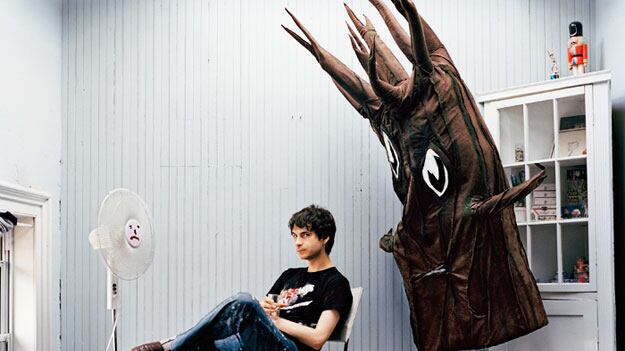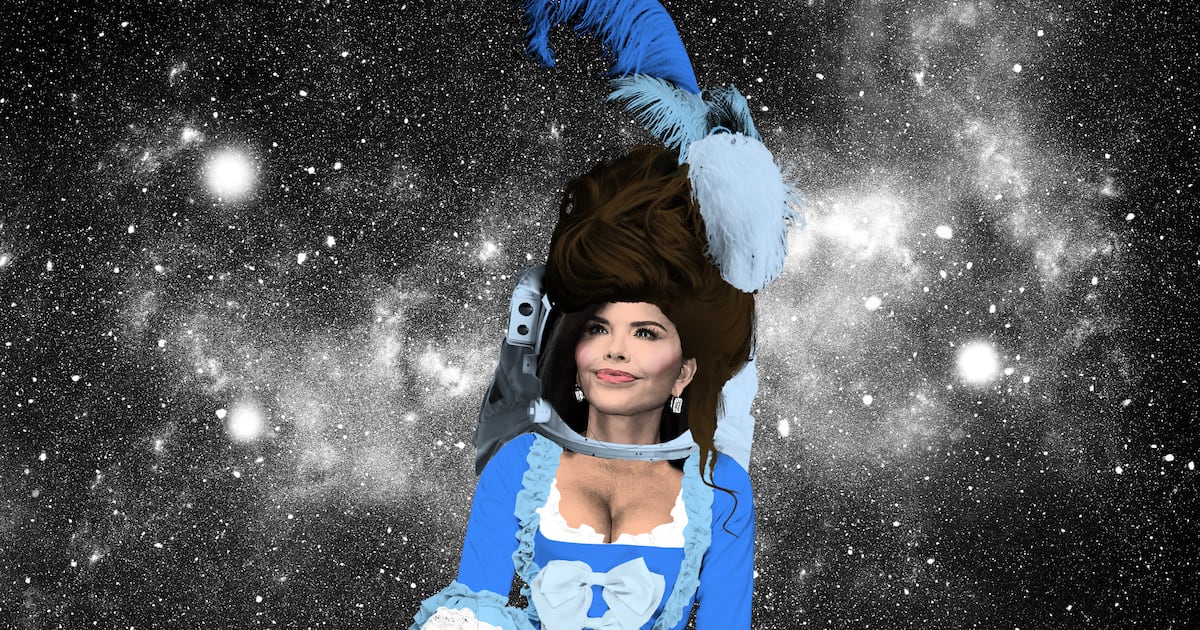Walking through Marcel Dzama’s show, Of Many Turns, at the Musée D’Art Contemporain de Montréal gives one the giddy feeling of having jumped right into one of the artist’s drawings. Here is the familiar cast of characters—tree creatures, girls in military garb, plush bears, flying octopi, cowboys, bats, and more bats. But instead of conducting their battles and parades, their Busby Berkeley-styled dance routines, and their strange, dark treacheries within the bounds of the earth and root beer-toned watercolors that the 35-year-old Dzama is known for, they’ve burst out of the frames.
Click Image To View Our Gallery Of Marcel Dzama

With more than 60 works on display, this is the largest exhibition of the Winnipeg-born artist to date, and it feels something like a Dzama theme park. Entering the show, which runs through April 25, you almost expect to hand over your ticket, be hoisted into the lap of the white plaster and papier-mâché alligator who guards one of the gallery doors, and embark on a rickety rollercoaster ride around the galleries’ peripheries.
The reality is even more delightful. At the show’s opening, French- and English-speaking crowds filled the museum. Viewers stepped into the first gallery and took their seats to watch two short films, The Lotus Eaters (2005-2007) and The Infidels (2009) energetically accompanied by a live piano player. On the screen float images full of nostalgia for a world that manages to seem simultaneously lost to the winds of time and sharply current. A girl dances slowly with a costumed bear, and then a “terrorist army” made up of gamines in short military skirts and hoods dances its way to victory over a troupe of bumbling soldiers, who get blood all over their mittened hands.
Next, a visitor ducks behind a curtain to enter another darkened room, this one displaying illuminated dioramas, many of which appeared in Dzama’s 2008 show Even the Ghost of the Past at David Zwirner Gallery in New York. In Now You Must Marry the Rope-maker’s Daughter (2009), a man in a white suit, a rifle propped against his body, stands in a hole in the ground. The noose around his neck is attached, aboveground, to a flying white bat. The ominous strangeness of the scene is typical of Dzama’s natural history-style dioramas, which seem to document the habits of a fairytale version of our society.
The playfulness that animates much of Dzama’s work is visible in the next gallery in A Red Box for Marcel (2009), which doubles as a chess board, and contains a treasure trove of items, including a DVD of The Infidels, roughly hewn papier-mâché chess pieces, a Polaroid of a ghost costume, drawings of dancing girls with guns, pieces of lace, and a 45 rpm record. “I thought of it as a gift for Marcel Duchamp,” says Dzama, referencing the artist whose influence is visible throughout the exhibition, “a traveling museum that I made for him.”
One of the show’s quieter pleasures is a series of small oil paintings titled Forgotten Terrorist, each numbered, showing the same scene: a woman sits on a bed in a cell-like room, her gun at rest beside her. She looks out of the frame, her gaze sometimes seeming to meet that of the viewer, other times looking off into the distance. Of these, Dzama says, “I enjoyed painting that image over and over again in an obsessive way, seeing how they change, depending on the mood I’m in. How I was feeling day to day comes across in the colors I choose, the way the style changes.” These paintings feel like a calm reprieve from the frenetic action of Dzama’s imagination. They offer a glimpse into the simple humanity of the terrorist—or, for that matter, of the artist—sitting still, forgotten, between his or her violent acts.
In the last gallery, the heroine of the show stands inaccessible and heroic over the crowds. Polytropos of Many Turns is a life-size model of the dancing soldier girl in The Infidels and she turns in a jerky circle, her gun held above her head, a mask covering her face. (Homer used “polytropos”—or “many turns”—to describe Odysseus and it defines this exhibition in which Dzama’s creatures twist in so many different directions.)
“It’s nice seeing the whole thing all together,” Dzama says of the show. “My studio isn’t so big, so after I finish something the gallery picks it up and I don't see everything together until the show.” He pauses. “It’s sort of like a family reunion.”
Plus: Check out Art Beast, for galleries, interviews with artists, and photos from the hottest parties.
Sasha Watson has written about books, art, and travel for ARTnews, the Los Angeles Times, and DoubleX. She is the author of the young-adult novel Vidalia in Paris.





